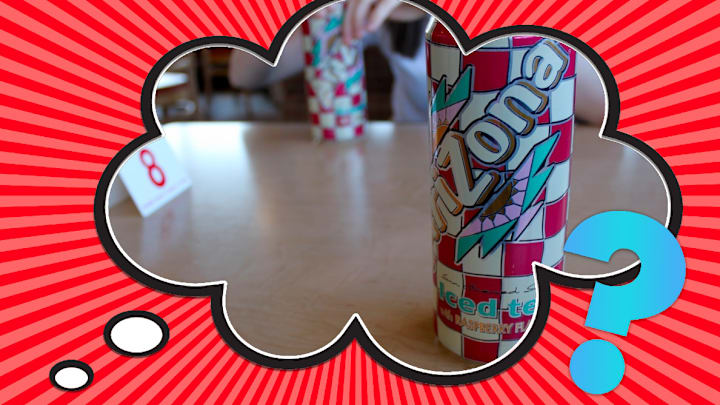Despite being a bladder-shattering 23.5 ounces, cans of AriZona iced tea have never wavered from the 99-cent price point introduced shortly after the drink debuted in 1992. It’s even printed on the label as a way of warding off sugar-water price gouging by retailers.
The fact that AriZona has been able to resist inflation for more than 30 years is impressive. The fact that the cans usually wind up being cheaper than smaller soft drinks is also impressive, until you begin to realize how strange it is that a vat of iced tea and its accompanying ingredients are somehow less expensive than plain water.
In a 2016 interview with Thrillist, AriZona chief marketing officer Spencer Vultaggio shed some light on this convenience store mystery.
Unlike water titans Coca-Cola (which distributes Dasani), Danone (which owns Evian), or Fiji, AriZona has virtually no advertising dollars invested in their teas. "We feel like it’s more important to spend money on something that our customer really cares about, instead of buying billboards or putting our cans in the hands of some celebrity for a few minutes," Vultaggio said.
Even with a frugal approach to ads, AriZona still has to deal with rising production costs. To help resist increasing prices to compensate, the company has pursued alternative manufacturing methods, using 40 percent less aluminum in cans and having enough factories dotting the country to make transportation more efficient. Bottled water, in contrast, is sometimes sourced from abroad, making for exorbitant shipping costs, which get passed on to the consumer.
In 2022, AriZona faced its biggest challenge yet: how to maintain the 99-cent price in the face of rapidly surging consumer costs. As of January 2023, the can is still 99 cents, but AriZona raised the price of its 20-ounce plastic bottle drink from $1.00 to $1.25 in northeastern markets to help address rising packaging and transportation expenses.
They had to make one additional concession: the famous 99-cent can is now a slightly smaller 22 ounces.
Have you got a Big Question you’d like us to answer? If so, let us know by emailing us at bigquestions@mentalfloss.com.
A version of this story ran in 2016; it has been updated for 2023.
